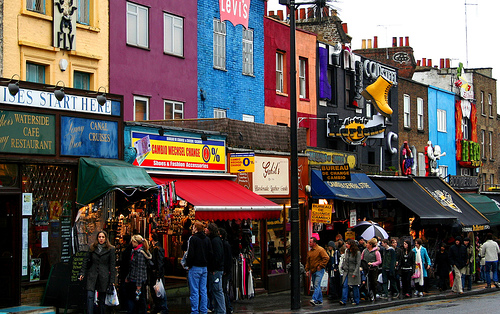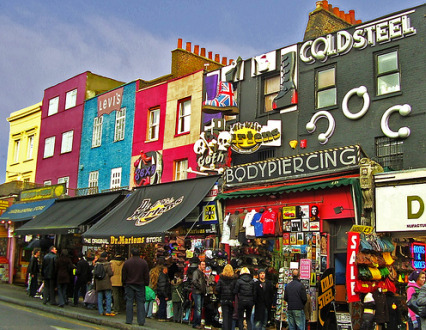Rome is a timeless and vibrantly colorful city near Italy's western Mediterranean coast, about half way up the front of “The Boot”. Rome's history spans nearly three thousand years and its influence has, since the early Roman Empire, permeated cultures around the world. Arguably, the Roman Empire was the most influential of all the great empires and today its structural and artistic legacies are still visible and visitable.
Oh, I didn't tell any of you I was going to Rome? Oops.
 |
| In front of the Pantheon |
 |
| Pantheon, right |
After my weekend holiday in Italy I can now say I've visited a grand total of three different countries. If I were to compare the three, I'd first toss out the US. Without any substantial history or influence and arguably very little man-made aesthetic beauty (natural US has its own loveliness, but I digress...), Italy and England have the US beaten to a pulp before any side-by-side lineups begin.


I've been warned, on multiple occasions, that visiting countries in Europe outside the UK will dissolve my love of this country and desire to “stay here forever”. But I can say now after having seen the legacy of the greatest empire on Earth that I will never love any place more than I do England. Don't get me wrong, Italy is outstandingly, indescribably beautiful and Rome's history, in particular, is incomparably rich and fascinating. But arriving in London Sunday night at 10:30PM felt like coming home. And for a girl who's been to 11 schools and lived in 3 states and has moved around so many times without ever making real connections to any place in particular, that feeling of belonging somewhere means more than any historical timeline or amount of ancient ruins ever could.
 |
| Pantheon |
In addition to this hugely personal epiphany, my two days in Rome reignited the candle in the dark corner of my brain where the file of 'ancient history stuff to know' is kept. Each of those two days encapsulated a combination of refreshing history lessons from a personal tour guide and touristy photo shoot sessions.
 |
| Small piazza with and even smaller trattoria |
Day 1 began at 1:30AM. I awoke and prepared myself for the flight from Standsted Airport, about an hour out of London. We arrived in Rome early enough to enjoy a full day. What struck me first was the warmth of that city. The browns and oranges and tans and pinks of the buildings themselves against an analogous clear blue sky reminded me of Florida with full palm trees dotting the landscapes. Even this late in the year the day was warm and perfect for exploring new territory on foot.

With time to spare before we met up with out guide outside the Vatican Museum, we chose to spend the morning getting ourselves lost in Rome. Camera in hand, we wandered the narrow alleys, climbing hills and avoiding a combination of tiny-car traffic, mopeds, and pedestrians. Rome undulates like the surface of the sea it sits near, very unlike the smooth predictability of London's streets, and the winding roads follow only the pattern of history, a link to the tracks used by ancient civilizations. Without any resemblance to a grid the layout of the streets feels completely arbitrary, thus getting lost is easy to do.
 |
| Pantheon piazza |
Where roads converge, linking one to the rest, you'll find seemingly endless named piazzas, as if someone just took a stamp and went wild over a map of Rome, dotting the city with these “squares” (though the spaces are rarely square in shape). Each one has its own statue, obelisk, or carved fountain at its the center, and some of the bigger ones have more than one or a combination of these. Typically, small eateries line the borders of these squares, all serving traditional Italian food; pizzas, pasta, cheeses, cuts of meat, and plenty of olive oil and wine. Each trattoria, or casual Italian-style restaurant, has most of its seating outside under a canopy with covers a small section, enclosed by small fences that are short enough to allow the guests to look out on the piazza and people-watch.



It's less common to find “other” cuisines in Rome; you will have to dig a bit if your stomach is craving a burger or sushi or, surprisingly, take-away coffee – Italians take their coffee in a single espresso shot and just down it in a single swallow at the counter. For that reason alone I could never live in Rome. No, I'm just being facetious. It's more likely the deciding factor would be the language barrier; not as many people speak English with fluency in the EU as “they” lead us to believe.




Our pre-guided tour wanderings on Day 1, like I was saying, were choreographed and semi-spontaneous. We ended up, first, at Palazzo Barberini, the converted residence of Pope Urbano VIII which houses the Galleria Nazionale di Atre Antica (...cognates, people: The National Gallery of Antique Art). The building itself was designed by the greatest architects of the time, Borromoni and Bernini. The rooms, in sequence, trace the development of religious art, primarily in paintings. However, the hanging paintings hardly rivaled the ceiling frescoes, in my opinion.
 |
| Palazzo Barberini |
 |
| Palazzo Barberini |
 |
| Prime Minister's House, right side of the frame |
Next, after passing a few other piazzas and the house the newly-resigned Italian Prime Minister, Silvio Berlusconi, which happens to be surprisingly lackluster and unobtrusive compared to many of Rome's important political buildings (the foreign Embassies, for example), we stopped at the Pantheon, one of Rome's best-preserved temples. It's been in constant use for 2,000 years, notably as a burial site for the famed painter Raphael (among others) since the Renaissance, and is still used for Masses even today. The building's consecration as a church saved it from the abandonment and destruction that befell the majority of ancient Rome's buildings during the early medieval period, though much of the decorative marble on its exterior was removed and used elsewhere. Thankfully, the lavish marble interior survived, as did the structure of the the Pantheon's dome, famously the world's largest unreinforced concrete dome.
 |
| Prime MInister's windows |
 |
| Pantheon and piazza |
We had lunch on a quiet side street at Da Francesco and, like proper Europeans, chose an outdoor seat. An adorable gay couple from New York sat down next to us and we compared itineraries and must-sees of Rome over plates of pizza, pasta and, in my case, a surprisingly white, flat, layered “salad”. In the mean time, I think I got some sort of food poisoning (can you get food poisoning from mushrooms or Parmesan???) but did not let my melting intestines stop me from enjoying Italy and our tour of the Vatican that afternoon.
 |
| Lunch here |
Vatican City, as most of you know, is a sovereign city-state on the west bank of the Tiber River, ruled by the Bishop of Rome – the Pope – with a population of just over 800. Like all of Rome, there is an unbelievable amount of history and far too many people involved in the establishment of Vatican City and everything it encapsulates to describe here in blog-form. Heck, entire volumes have been written on every miniscule element of that place; I can't compete with that.
 |
| The Pope lives up there on the top floor. |
I was lucky enough to hear all about it, though, from our personal tour guide, Stefania, but again I am in no way going to attempt to duplicate her story-telling abilities in a blog. I'll merely pick out a few key/favorite elements to touch on.
Stefania is an art historian and hiring her to lead us through the Vatican Museum and St. Peter's Basilica (on Day 1), and the ruins, Colosseum, and several other churches (on Day 2) was probably the best decision we made. Walking aimlessly among other tourists in crowded hotspots, merely browsing, would have been a waste of time compared to the one-on-one attention of a trained guide who could describe, in detail, all those miniscule aspects of the city that transform exploration into an educational experience. She could rattle off dates and names as if we were having a casual conversation over lunch about the weather; second nature.

She lead us through back roads, underground, and into the little niches of the city where some of the real gems of Rome are found. Plus, she let us choose what we wanted to see and was open to spontaneous changes in direction or length of stay to accommodate our personal interests. The malleability of the schedule, in contrast to what would have been a strict, time crunched group tour, synched perfectly with the relaxed attitude of our Roman holiday and with the peaceful, laid-back locals, themselves. Bonus: We got to skip all the lines of people waiting to see the attractions, lines that wove on and on and on, saving precious hours during that weekend.
 |
| Rafael's Thinker, which inspired many of Michelangelo's figures |
We met up with Stefania outside the Vatican Museum. I'll let the photos speak for themselves.
 |
| the longest hallway... |
 |
| Laocoon |
 |
| Room with only animal sculptures, the most difficult of all subjects to duplicate in marble. |
 |
| St Peter's Basilica, with the museum on the left | |
|
|
 |
| Inside St Peter's |
 |
| Inside St Peter's, Bernini's arch thingy and pure gold statue in the back |
 |
| From the Basilica, looking out on St Peter's Square |
 |
| St Peter's Basilica, left, integrated with a snack cart, right |
 |
| Inside St Peter's Basilica |
I loved that I got to see, in person, so many of the pieces I'd learned about in my own art history classes. The best of these, not surprisingly, were Michelangelo's Sistine Chapel and his Pieta.
But I'll stop here. Tune in next time to hear about Michelangelo's masterpieces.
All photos, credit: ME






 It's less common to find “other” cuisines in Rome; you will have to dig a bit if your stomach is craving a burger or sushi or, surprisingly, take-away coffee – Italians take their coffee in a single espresso shot and just down it in a single swallow at the counter. For that reason alone I could never live in Rome. No, I'm just being facetious. It's more likely the deciding factor would be the language barrier; not as many people speak English with fluency in the EU as “they” lead us to believe.
It's less common to find “other” cuisines in Rome; you will have to dig a bit if your stomach is craving a burger or sushi or, surprisingly, take-away coffee – Italians take their coffee in a single espresso shot and just down it in a single swallow at the counter. For that reason alone I could never live in Rome. No, I'm just being facetious. It's more likely the deciding factor would be the language barrier; not as many people speak English with fluency in the EU as “they” lead us to believe. 












































